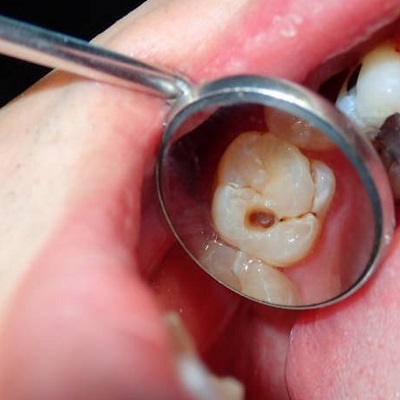Tooth-colored fillings have become a popular choice for dental restorations, offering both aesthetic and functional benefits. If you're looking for expert services at the Best Dental Tooth Filling Clinic Dubai, it’s important to understand how these modern fillings work. In this article, we'll explore the science behind tooth-colored fillings, their benefits, and what makes them a superior option for many patients.
What Are Tooth-Colored Fillings?
Tooth-colored fillings, also known as composite or white fillings, are made from a blend of plastic and glass materials. They are designed to blend seamlessly with your natural teeth, offering a solution that not only repairs cavities but also enhances the appearance of your smile.
Composition of Tooth-Colored Fillings:
The primary materials used in tooth-colored fillings include a resin matrix (a type of plastic) and finely ground glass particles. This combination creates a durable, aesthetically pleasing material that can be shaped and polished to match the natural contours of your teeth.
Benefits of Tooth-Colored Fillings:
Tooth-colored fillings offer numerous advantages over traditional metal fillings, such as amalgam. These include:
- Aesthetic Appeal: They blend naturally with your tooth color, making them virtually invisible.
- Bonding Strength: The composite material bonds directly to the tooth, providing added strength and support.
- Less Tooth Removal: Unlike metal fillings, which require more removal of healthy tooth structure, tooth-colored fillings allow for more conservative preparation.
The Bonding Process of Tooth-Colored Fillings:
One of the most significant advancements with tooth-colored fillings is the bonding process. Understanding how this bonding works can shed light on why these fillings are so effective.
Etching the Tooth Surface:
Before applying the filling material, the dentist lightly etches the surface of the tooth. This creates a slightly rough texture that helps the filling adhere better to the tooth structure. This step is crucial for ensuring a strong bond, which minimizes the risk of the filling dislodging over time.
Application of Adhesive:
After etching, a dental adhesive is applied to the tooth. This adhesive acts as a bonding agent between the tooth structure and the composite material, ensuring that the filling stays securely in place.
Layering the Composite Material:
The composite resin is applied in layers to the tooth. Each layer is shaped to fit the natural contours of the tooth, ensuring a comfortable and natural feel. After each layer is applied, a special curing light is used to harden the material. This process is repeated until the cavity is completely filled.
How Tooth-Colored Fillings Are Hardened:
Tooth-colored fillings are unique in that they require a special curing light to harden. The light activates certain compounds within the composite resin, causing the material to harden and bond to the tooth.
The Role of Polymerization:
The curing light initiates a process called polymerization, where the molecules within the resin link together to form a strong, durable structure. This step ensures that the filling is tough enough to withstand the pressure of biting and chewing.
Durability of Tooth-Colored Fillings:
While tooth-colored fillings are not as long-lasting as amalgam fillings, they still offer excellent durability. With proper care, these fillings can last for many years before needing replacement.
Factors Influencing Longevity:
The lifespan of tooth-colored fillings depends on several factors, including:
- Size and Location: Larger fillings or those placed on molars, which endure more force from chewing, may wear down more quickly.
- Oral Hygiene: Good oral hygiene practices, such as regular brushing and flossing, can prolong the life of the filling.
- Diet: Avoiding hard or sticky foods can prevent damage to the filling.
Advantages Over Traditional Metal Fillings:
There are numerous reasons why tooth-colored fillings are a preferred choice over traditional metal fillings.
Aesthetic Advantages:
Unlike metal fillings, which can be easily seen when you open your mouth, tooth-colored fillings blend seamlessly with your natural teeth. This makes them an ideal choice for visible teeth like those at the front of the mouth.
Reduced Risk of Cracks and Fractures:
Metal fillings tend to expand and contract with temperature changes, which can lead to cracks or fractures in the tooth. Tooth-colored fillings, however, do not undergo the same level of expansion and contraction, reducing the risk of such damage.
Choosing the Best Dental Tooth Filling Clinic in Dubai:
If you're considering tooth-colored fillings, it’s essential to select a reputable clinic. The best dental tooth filling clinic in Dubai offers the latest technology and materials, ensuring long-lasting and natural-looking results. Experienced dentists will assess your unique dental needs and recommend the best treatment options for you.
Expertise and Technology:
When selecting a clinic, look for one that uses advanced technology, such as digital imaging and laser dentistry, to provide precise and efficient treatments. These innovations contribute to better results and a more comfortable patient experience.
Customized Treatment Plans:
The best clinics in Dubai offer personalized treatment plans that cater to your specific dental needs. This ensures that your fillings not only restore function but also match the aesthetic of your natural teeth.
Conclusion:
Tooth-colored fillings represent a significant advancement in dental care, providing patients with a natural-looking and durable solution for cavity repair. Understanding the science behind these fillings, from the bonding process to the curing technology, highlights why they are such an effective choice. For the best results, always seek treatment at the best dental tooth filling clinic in Dubai, where expert care and cutting-edge technology ensure that your smile stays healthy and beautiful for years to come.





Comments